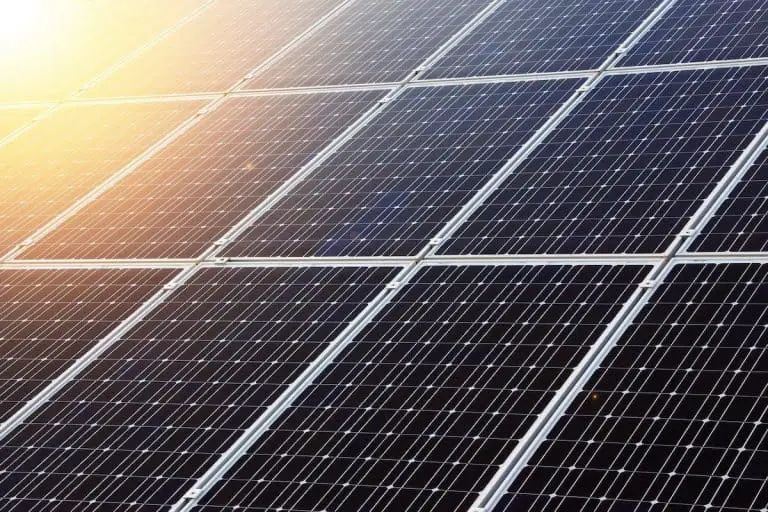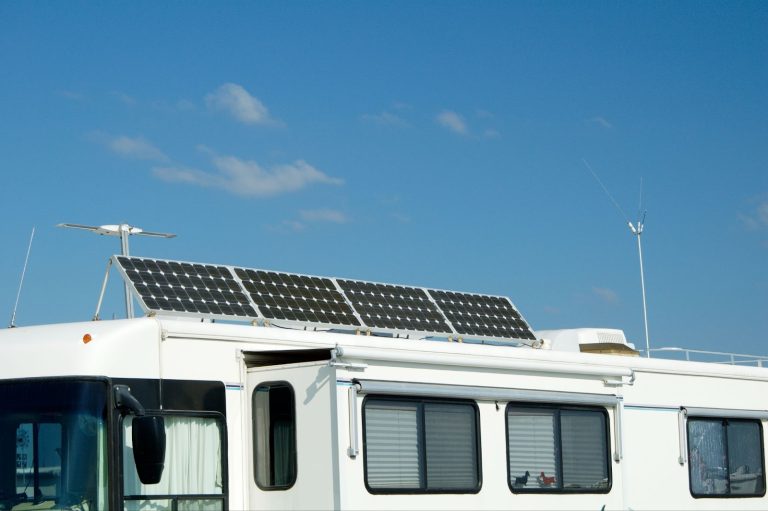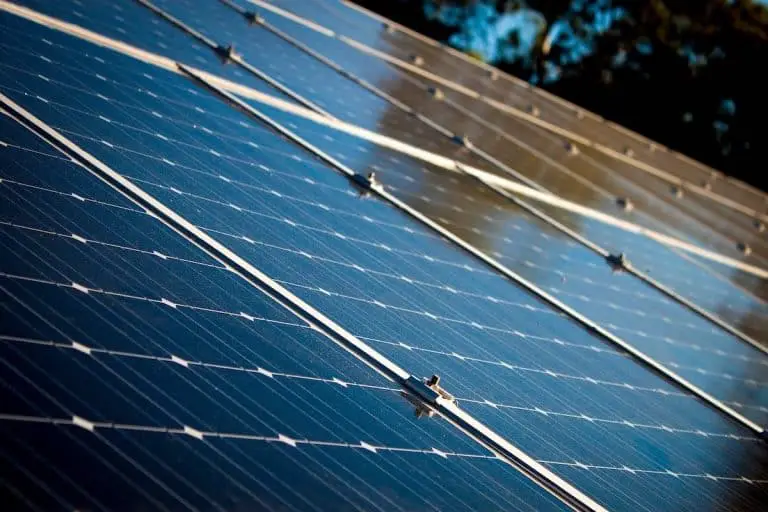Will a Solar Panel Run a TV?
A solar panel can run a TV by using an inverter or some form of battery storage, such as found in portable solar generators. The supplied power output must meet or exceed the necessary voltage and ampere requirements of the TV. Many generators can power multiple devices at once.
Solar panels have heralded a new era of self-sufficiency, helping households get off the grid, power their electronics on the road, and save on their electricity bill. Solar panels can run numerous appliances, but will a solar panel run a TV?
Many solar installations utilize a deep-cycle battery to store charge during the day and power electronics during the night, meaning how long you can power a TV using a solar panel is also a relevant question.
Several variables affect how we calculate the running time for electronics powered by solar, such as battery size, the number of sun hours in your area, the size of your solar panel, and your TV’s energy consumption. I will take a closer look at these factors below.
Solar Batteries & Inverters
If you’re looking to run a TV either on the grid or off using a solar panel, you’ll need an inverter to change the DC current to AC current. If you’re looking to go off the grid, you’ll need a solar battery to store the power you generate.
Grid-tied solar panels are a handy configuration if you’re simply looking to save energy during your peak consumption hours.
Deep-Cycle Solar Powered Batteries
Once connected, your solar panels will charge a deep-cycle battery during the day, storing power for the night or during hours when it cannot produce electricity.
If you’re interested in reading a more technical breakdown on how deep-cycle batteries work with TVs, please read our related article, “How Long Will a Deep-Cycle Battery Run a TV?”
In summary, deep-cycle batteries are rated based on the level of amp-hours they can provide, which directly affects how long you’re able to power your TV. I’ll touch on this more when I discuss Ohm’s Law.
Your solar panels will be connected to your deep-cycle battery, storing energy as direct current (DC). Your inverter will then change this to alternating current (AC) going to your TV or other household appliances.
Inverting Direct Current to Alternating Current
An inverter is an electrical component that forces the consistent current flow of direct current through a series of diode switches that results in the same alternating output in traditional alternating current (source).
Without an inverter, your solar panel will not be able to power your TV or any other device that requires alternating current, for that matter. One could get by without a deep-cycle battery and use solar power directly through an inverter, but not the other way around.
For example, the Jackery 300 W power station/inverter can power a TV at your campsite or tailgate for 4.5 hours when fully charged and not connected to a solar panel. Adding a solar panel will allow for multiple devices and indefinite use during sunny daytime conditions.
Calculating Power Generation and Consumption
To ensure your solar panel generates enough energy to power the devices consuming that energy, you’ll need to utilize Ohm’s Law to make that calculation.
Ohm’s Law Explained
Ohm’s Law describes the relationship between a circuit’s voltage, the flow of electricity, the resistance it experiences while flowing, and the power consumed by components in the circuit (source). You can even find online calculators to assist.
Regardless of whether you’re using a deep-cycle battery or not, you’d need to ensure that what your solar circuit puts out is enough to power your TV.
Standard consumer TVs are typically wired to run off regular mains power, meaning the standard 120- or 240-volt alternating current. This is an issue since the average individual panel can only output 12 volts. In that case, more than one solar panel would be required.
Thankfully, there are specially made TV sets that are engineered to run off 12-volts. They are commonly found in RVs and storm shelters, where users wouldn’t have access to mains power.
These kinds of TVs make it very easy to power through a solar panel, getting by with only a single panel.
Amp-Hours
Another possible factor to consider is amperage; however, due to the efficiency of modern TVs, your TV’s amperage when powering it directly from your panels is almost a non-issue.
This is something we cover more extensively in a separate article, “How Many Amps Does a Solar Panel Produce?”
Deep-cycle batteries carry amp-hour ratings, speaking to the flow of current they can provide each hour. TV consumption varies from model to model, but two amps is a good average to use for your calculation if you’re unsure of your exact TV’s amp rating.
You would then divide this amp requirement into your deep-cycle battery’s amp-hour rating to calculate how long you’d be able to power your TV off the battery.
Kilowatt-Hour to Amp-Hour Calculation
Let’s say your TV’s monthly kilowatt-hour usage is 20kWh. We’ll cover the factors that affect this specific figure below, but suffice it to say that this is a good average to use if you are uncertain.
This would mean we should consider a 48kWh-rated, lead-acid deep-cycle battery or a 25.2kWh-rated, lithium deep-cycle battery, depending on what is affordable for you. The reason for these differences is because of the inefficiency factor of the battery materials and the depth of discharge expected from those battery types.
Based on Ohm’s Law, we’re able to convert kilowatt-hours to amp-hours. This means that the 48kWh lead-acid battery is capable of supplying 400Ah at 120V, while the lithium battery can provide 210Ah at the same voltage.
Of course, there would be many other demands for electricity in a typical household, but using this calculation as a baseline has shown that this situation is feasible.
If your specific situation was unfeasible or you wanted to get more hours of use out of your TV, you could consider upgrading your battery to provide more amp-hours, finding a TV with lower energy consumption, or limit the use of features that consume more power.
Factors Affecting TV Energy Consumption
Televisions have become increasingly efficient in how much energy they consume. This is great news for solar panel users, as it allows them to get more hours of usage out of the energy they capture.
Screen Size
Simply put, the bigger the screen is, the more electricity is needed to power it. The wattage varies between manufacturers and models, but you can expect a 55-inch LED TV to peak in the region of 240 watts, whereas an 82-inch TV could use a maximum of up to 565 watts (source).
This comes down to the number of components used in larger screens since there is a larger panel to power and more LEDs used.
Backlighting and Screen Technology
LEDs are well-known for their efficient use of electricity, so there is no surprise that they’re the predominant component in the latest TV sets, compared to the old cathode ray tubes that used anything up to 120 watts.
In comparison to modern screens, this may not sound like much, but one should consider that these couldn’t go any larger than 40” wide due to size limitations of the cathode ray tubes, and the picture quality was rather poor.
On the other hand, LED TVs can scale up to tremendous sizes while delivering ultra-high quality images at a fraction of the energy requirement.
Backlighting is also important to factor in. In a sense, efficiency is sacrificed to improve image quality in this regard.
Edge-lit LED TVs are slightly more efficient since they only use a single strip of LEDs along the screen’s edge to light the panel.
Full-array LED-lit TVs are a recent development. Instead of having LEDs lining the edges only, the whole panel is lined with LEDs behind it, increasing the overall number of LEDs used to backlight the panel compared to edge-lit TVs. These LEDs dim and shine together to create richer colors.
Added into this extra consumption is the processing unit that controls the LED array. It constantly monitors the picture displayed microseconds before it gets shown to optimize how the LEDs, thus showing the best picture on the screen.
This consumes more energy than edge-lit LED TVs, though the difference is not very significant — the difference is a matter of 30 or so watts.
Powering Other Features
TVs are incredibly capable devices these days, with the ability to browse the internet, stream entertainment through apps, connect to other devices wirelessly, and upscale lower quality inputs to make use of the TV’s full potential.
All of these features are powered by a processing unit that traditional TVs didn’t have. Some consume more power than others — with features like upscaling using considerably less than connecting to other devices through Bluetooth or Wi-Fi.
These features can mostly be switched off, though. This is handy for solar panel users looking to micro-manage their household electricity consumption to make the most of the power generated by their solar panels.
A Note on 12-Volt TVs
It is worthwhile noting that 12-volt TVs normally make large sacrifices in the above departments. 12-volt TVs are typically a lot smaller in screen size, use a screen technology that doesn’t achieve the same clarity, or they don’t have as many modern features that traditional TVs have.
They are, however, ideal in the circumstances they’ve been engineered for, being incredibly power-efficient and mobile.
Final Thoughts
Solar panels can most definitely run TVs, with some boasting very generous run times as well. The results are dependent on the specific solar panel, the TV you’re using, as well as the deep-cycle battery you have connected. 12-volt TVs are worth considering if you are limited to only one panel or are looking for a mobile solution.
I’ve explored how to get the most out of your solar panels by using some scientific equations. Once you’ve considered all of those aspects, you’re ready to start watching TV powered by the sun!







